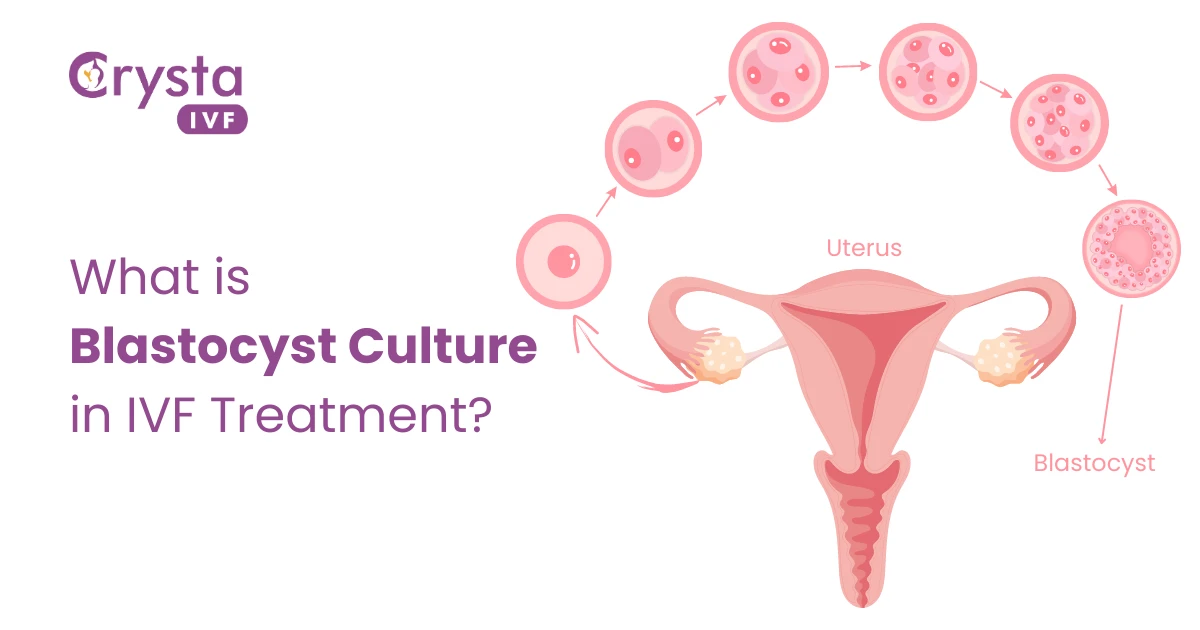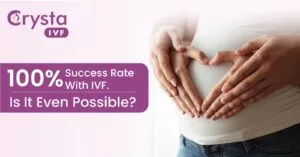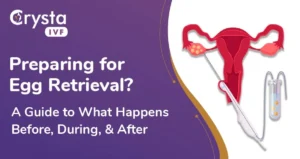Imagine giving your embryo the best possible start before it even reaches the womb! That’s exactly what a Blastocyst Culture does in IVF treatment. Instead of transferring embryos early, this advanced technique allows them to grow for five to six days in a lab, reaching the blastocyst stage, where they become stronger and more viable for implantation.
But how does this improve IVF success rates? And is it the right choice for you? Well, read this blog to get answers to all these questions.
Blastocyst Culture: Understand the term more insightfully
In simple words, the process of developing a blastocyst, or embryo that is 5 to 6 days old, outside of the human body in a laboratory using specialised culture material is known as Blastocyst Culture.
This is accomplished by fostering the embryo until it is prepared for implantation into the endometrium, the uterine lining.
In this Blastocyst stage, the cells are divided into countless numbers to make the embryo the most healthy. The developed embryo is ideally transferred when nourished and nurtured until the blastocyst stage.
In the blastocyst culture, the formed embryos are examined based on two different ways:
- Cell Division: For the first 12 hours after conception, the fertilized egg appears to be in a single cell. After 30 hours or so, the cells divide from one to two. Later, these two cells will divide to become four. At the end of 3 days, the fertilized egg takes on the structure of the berry with 16 cells known as “morula.” On the 5th or 6th day, the egg divides into multiples, and the stage is renamed “blastocyst.”
- Quality of embryo: The quality of the embryo depends on its stages. Though the blastocyst is only the size of a pinhead, it comprises hundreds of cells. According to blastocyst culture in IVF, the chances of getting successfully pregnant remain at the blastocyst stage. So at this stage, the blastocyst must attach to the lining of the uterus; otherwise, the pregnancy will fail to survive, and the IVF treatment will fail.
Stages of Blastocyst Culture to Form a Blastocyst
In Vitro Fertilisation (IVF) or Intracytoplasmic Sperm Injection (ICSI) are the methods used to accomplish fertilisation after the egg retrieval process in the IVF lab. After that, the resultant embryos are put in an incubator to continue developing.
The following are the several phases of embryonic development that occur in the lab:
- Day 0: The egg retrieval day
- Day 1: The pronuclear stage, during which the embryologist determines the number of successfully fertilised eggs
- Day 2: The stage with two to four cells
- Day 3: The stage with eight cells
- Day 4: The stage of Morula
- Day 5 or 6: The stage of the blastocyst
How an Embryo Grows to the Blastocyst Stage in IVF?
Cleavage stage (Days 1–3):
The cells repeatedly divide during this stage. To be more precise, the genetic material is duplicated in each cell, making the overall volume of the zygote (a fertilized egg) appear to be the same. The first few days of IVF are considered critical and require constant supervision. When the cells start to divide following the culture, the presence of too many cell fragments and the absence of genetic material indicate a lower chance of getting a successful conception.
Morula Stage (Days 3–5):
The moment the cleavage stage ends, the morula stage begins. The morula stage is known to prepare the zygote (the cells still undergoing division) to grow. These divided cells effectively arrange themselves into a hollow circle to facilitate the known transition into the blastocyst stage.
Blastocyst stage (Days 5–6):
It is noted as the final phase of the development of a fertilized egg. The above stages lead to the formation of two layers of cells. The outermost layer provides the tissues essential for a healthy pregnancy’s survival, including your placenta and amniotic sac. While inside the protective outer layer lie the multiple numbers of cells that will eventually develop into a baby.
The blastocyst culture comes to life when many cells expand, pushing against their protective shell and preparing for implantation. Once the shell is broken, the zygote hatches and adheres to your uterine wall, where it becomes a fetus.
Step-by-Step Procedure of Blastocyst Culture
The blastocyst culture is a thorough procedure done in a lab by the embryologists under the guidance of an IVF specialist. The procedure is mainly divided into 4 main steps, which include:
- Fertilisation of Egg With Sperm: The egg is fertilised with the sperm with the help of IVF or ICSI in a petri dish.
- Incubation of Embryo in Culture Media: The fertilised egg or embryo is placed in a culture media to help it grow. This media is kept in an incubator to provide an appropriate environment for the egg.
- Observation & Monitoring: Embryologists track the growth of embryos in the culture, which turns into a blastocyst after 5-6 days.
- Selection & Transfer: The best embryos are selected and are transferred to the mother’s uterus after the blastocyst stage.
What are the Benefits of Blastocyst Culture with IVF?
Blastocysts have a greater chance of preceding a successful IVF treatment than the implantation performed on day 3 of the embryo. A blastocyst is known to be the healthiest embryo and is also preferred by an IVF specialist.
Reduce the chances of multiple pregnancies: When the embryo gets transferred at the blastocyst stage, it enhances the possibility of a successful conception with just one embryo transfer, so reluctantly, it reduces the possibility of multiple pregnancies and the obstetric complications associated with them.
Enhance the IVF outcome: Blastocyst culture improves the IVF treatment outcome. In this, the embryologists get a more extended period to monitor and observe the embryo for 5–6 days. In addition, these time durations also aid an embryologist in selecting an embryo that can grow up to a blastocyst, which has tremendous potential compared to those embryos that are transferred on the third day.
Mimics natural pregnancy: During natural pregnancy, the embryo gets implanted at the blastocyst stage into the uterine lining. This blastocyst culture and transfer process mimics the exactness of a natural pregnancy, enhancing the success of IVF more accurately.
Following the blastocyst implantation, a pregnancy test will be performed after 7 days to determine if the embryo implantation was successful.
Read more: How Soon Can a Pregnancy Test Be Taken After Implantation?
Long in short, embryo culture helps to improve the embryo selection process by allowing embryologists to gather more and more information so that successful implantation can occur.
Who Can Benefit From Blastocyst Culture?
Blastocyst Culture is Suggested to patients who:
- Multiple Unsuccessful IVF: For individuals who have experienced several unsuccessful IVF attempts, a blastocyst culture can provide further insight into the embryos’ progress and help increase the likelihood of a successful pregnancy.
- To prevent Multiple Pregnancy: Blastocyst culture makes it possible to transfer the best embryo, which lowers the likelihood of multiple pregnancies.
The bottom line
Blastocyst culture is one of the most significant factors of IVF treatment, where a successful embryo transfer should be your goal for the long and endless journey. However, the decisions finalized by a team of IVF experts are usually based on your age, fertility history, and how many embryos to transfer that will lead to a successful pregnancy. So, it is better to talk with your doctor at the best IVF center in Delhi, let them study your health condition, and reach the ultimate goal of a successful pregnancy so that you can overcome the hurdles in your life and start your journey to enjoying parenthood at the earliest.
Related Post: Frozen Blastocyst Transfer: A Comprehensive Guide




